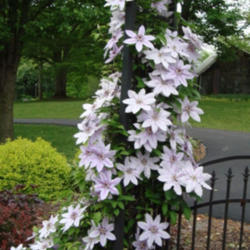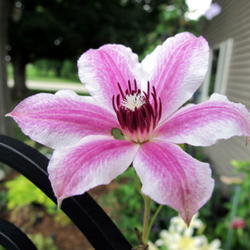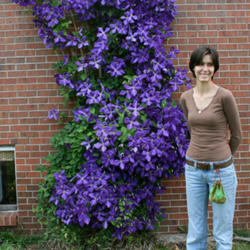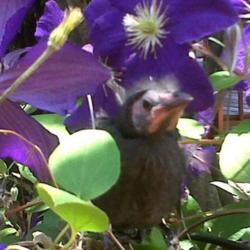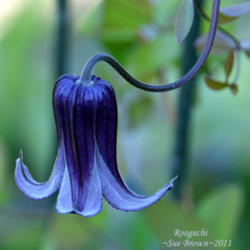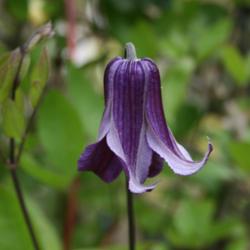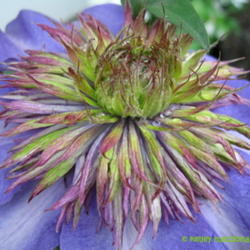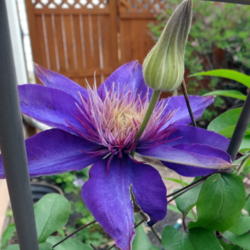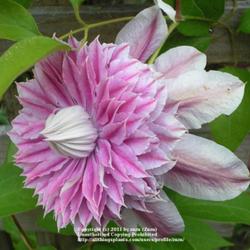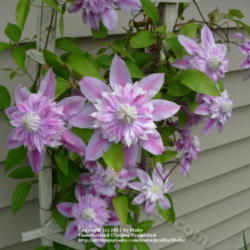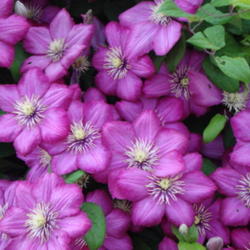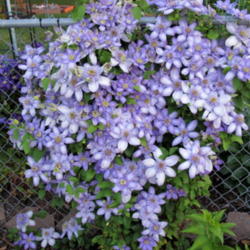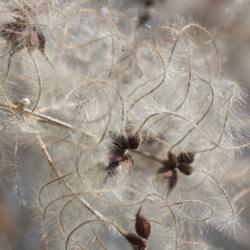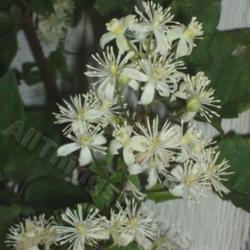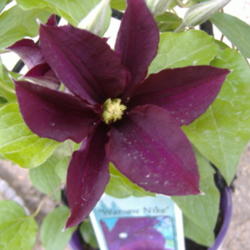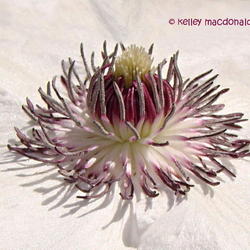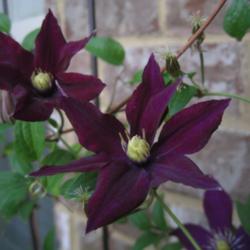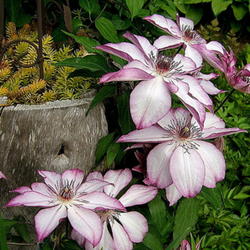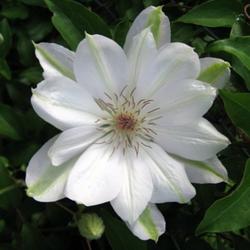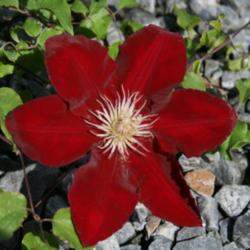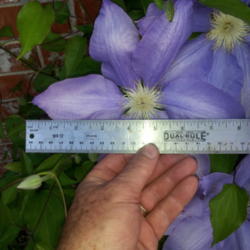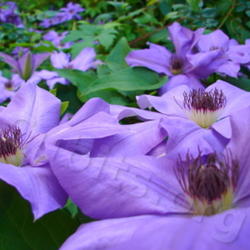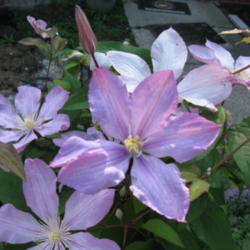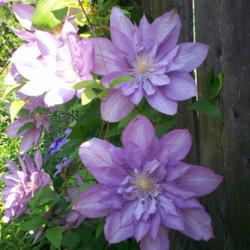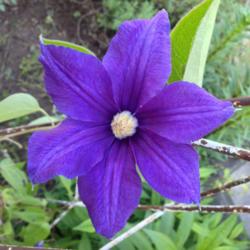#9: Clematis (Clematis Blue Light™)
@goldfinch4 says, "Is a sport of Clematis Mrs. Cholmondeley. Can have single and double flowers at the same time."
@BookerC1 added, "This clematis produces quite large sky-blue blossoms. They may appear to be single blossoms when they initially open, but they then continue to open over a long period of time, until the same bloom is nearly a pom-pom. You may also experience double blooms on the first flush of blooms, and then later a second set of blooms that remain single.
This clematis took a bit longer to get established than some, growing slowly and only producing a few blooms the first couple of years. They appreciate some shade at their base (head in the sun, feet in the shade), if you can plant a low clumping plant at the base.
This is a really spectacular clematis, and well worth the patience it takes to reach that first year of really heavy bloom!"
